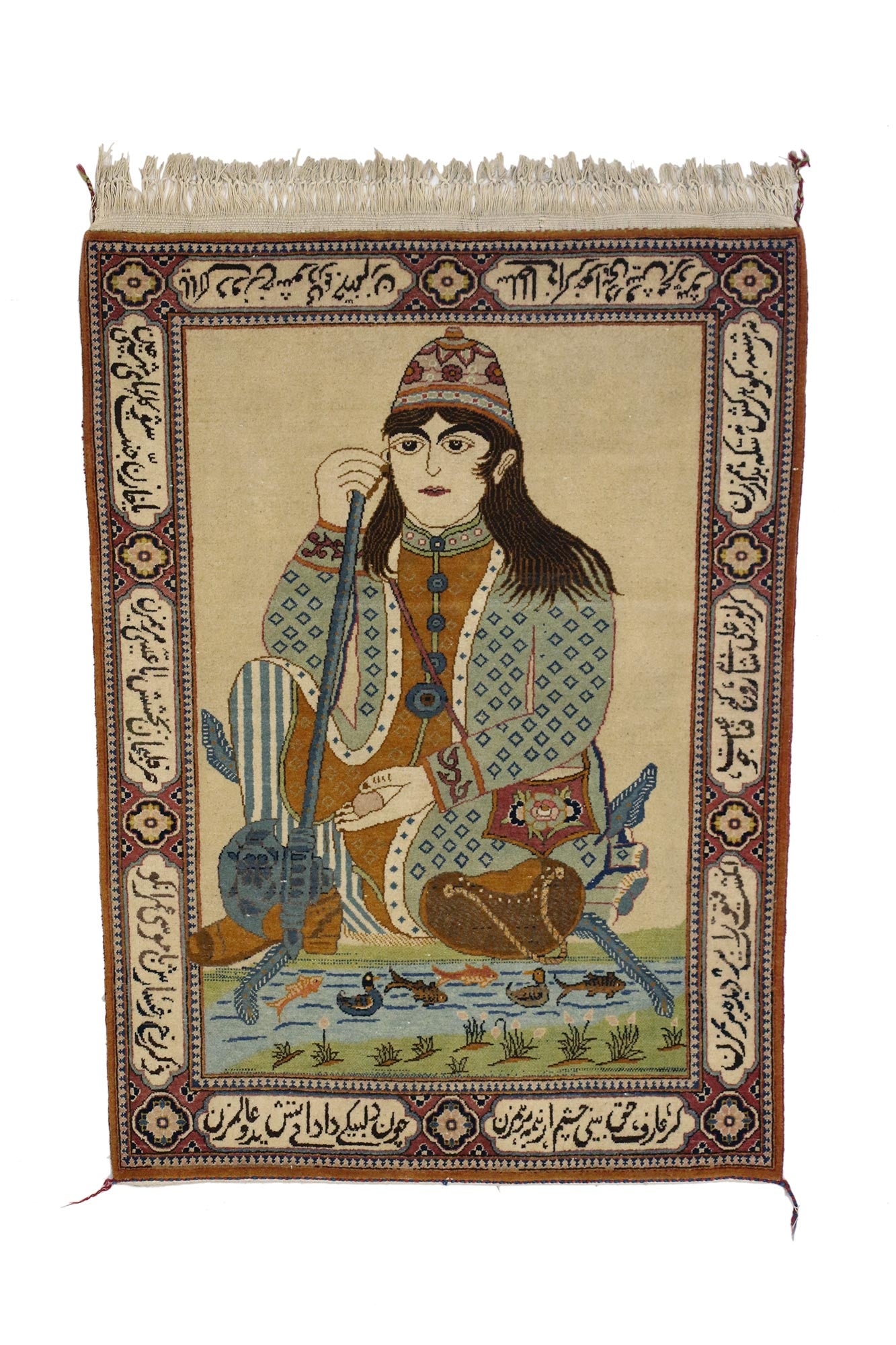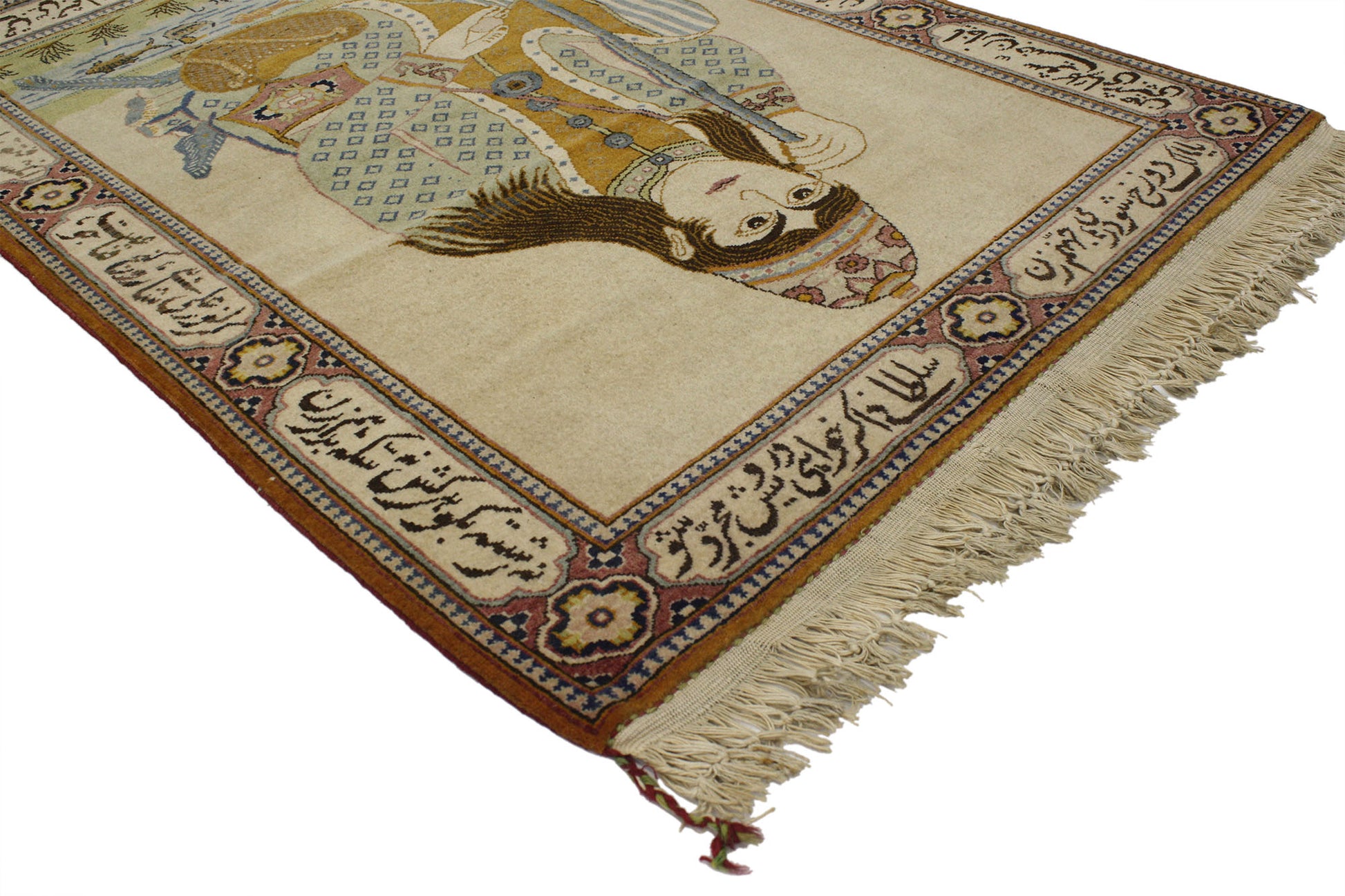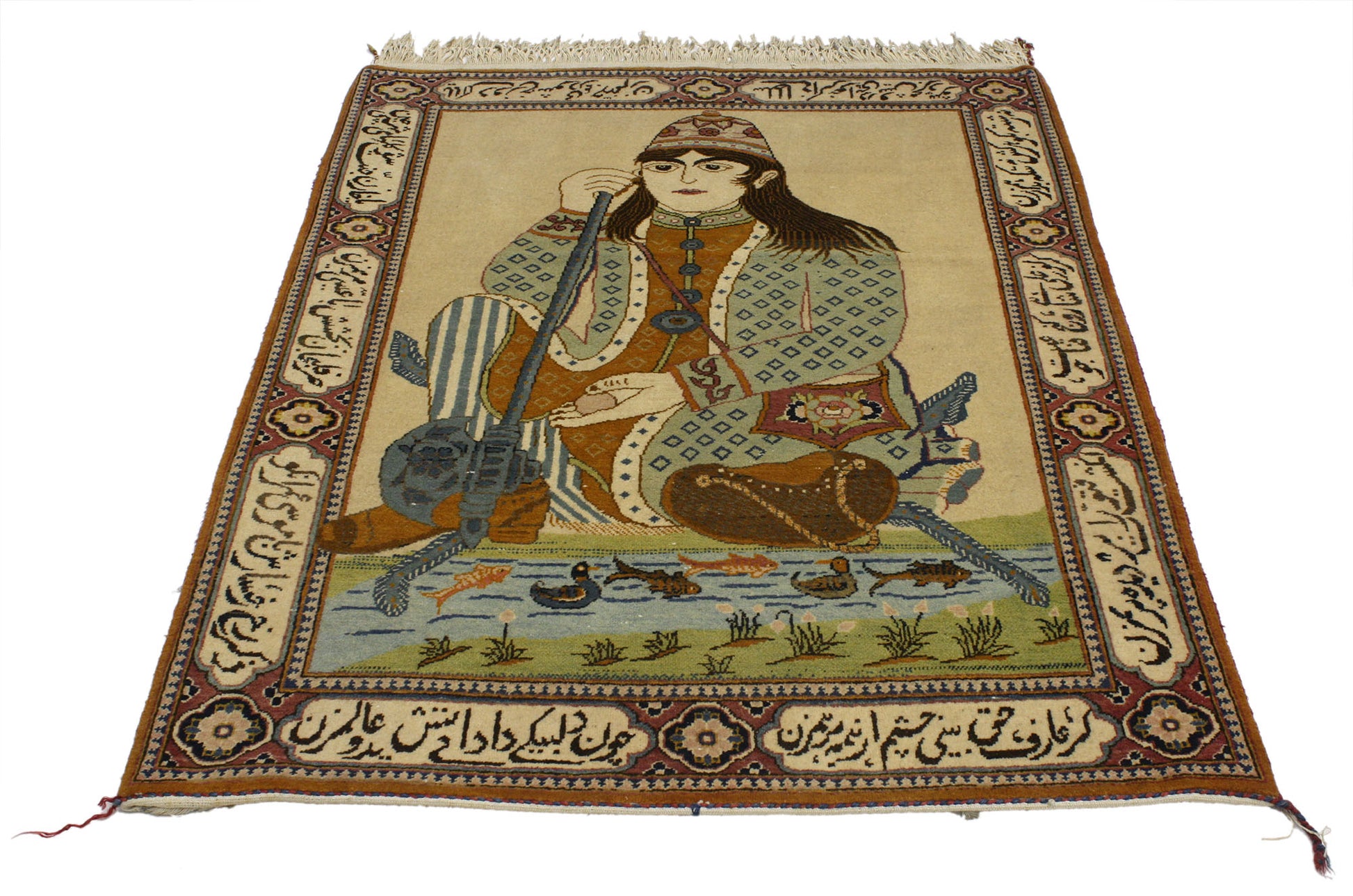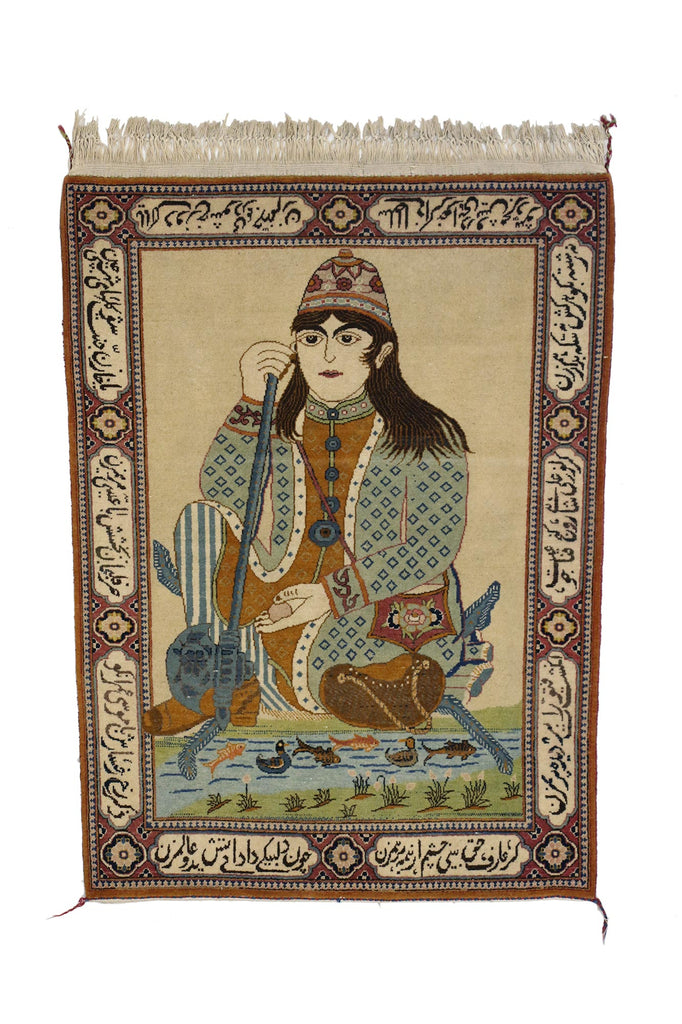3 x 4 - Beige Antique Persian Kashan Rug - 77017
3 x 4 - Beige Antique Persian Kashan Rug - 77017
Add Rug Pad
Only 1 left in stock: Shipping in 2-5 days
Rug Details
Delivery / Returns / Payment
Shipping Insured worldwide delivery. Most in-stock rugs leave our Dallas warehouse within 2 business days.
Returns Item must arrive in the original condition with tags attached. Return freight & insurance are the customer’s responsibility. We accept:
● 10-day returns for standard purchases
● 3-day returns for promotional-sale items
Refunds exclude outbound shipping & handling.
Payment Checkout online with all major cards, or call (214) 651-7847 to pay by phone. Checks are welcome; we ship once funds clear.
Trade Clients Qualified trade accounts may request rugs on approval—simply choose “Trade Approval” at checkout and we’ll arrange two-way logistics.
Care Instructions
● Vacuum with the beater bar off and always in the direction of the pile.
● Rotate 180° every 6 months for even wear and sun-fade balance.
● Blot spills immediately with a white cloth—never rub.
● Use a breathable rug pad to prevent slipping and fiber stress.
● Schedule a professional hand-wash every 3–5 years (sooner for high-traffic or pets).
Need in-depth guidance? See our full Rug Care Guide.
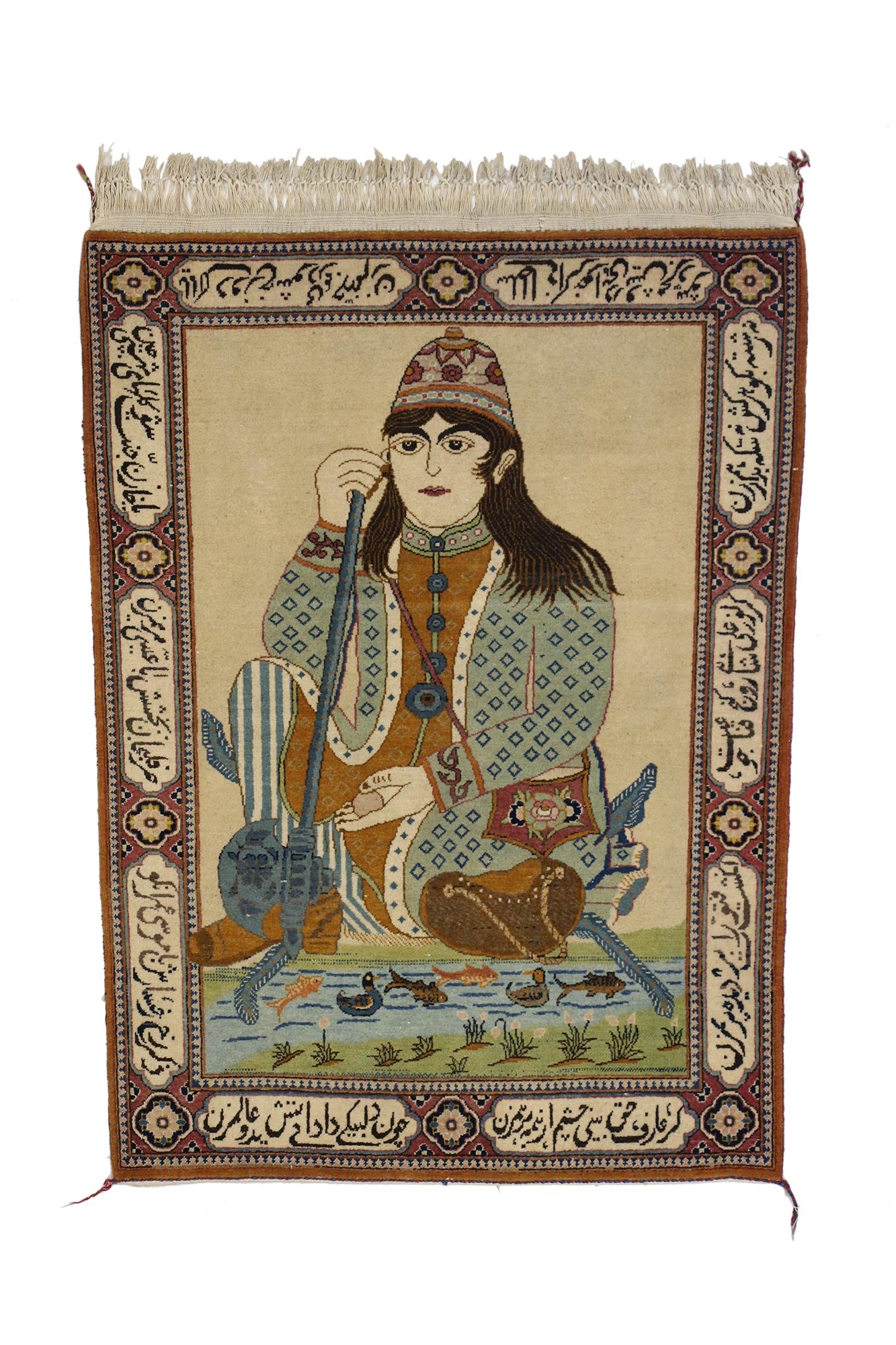
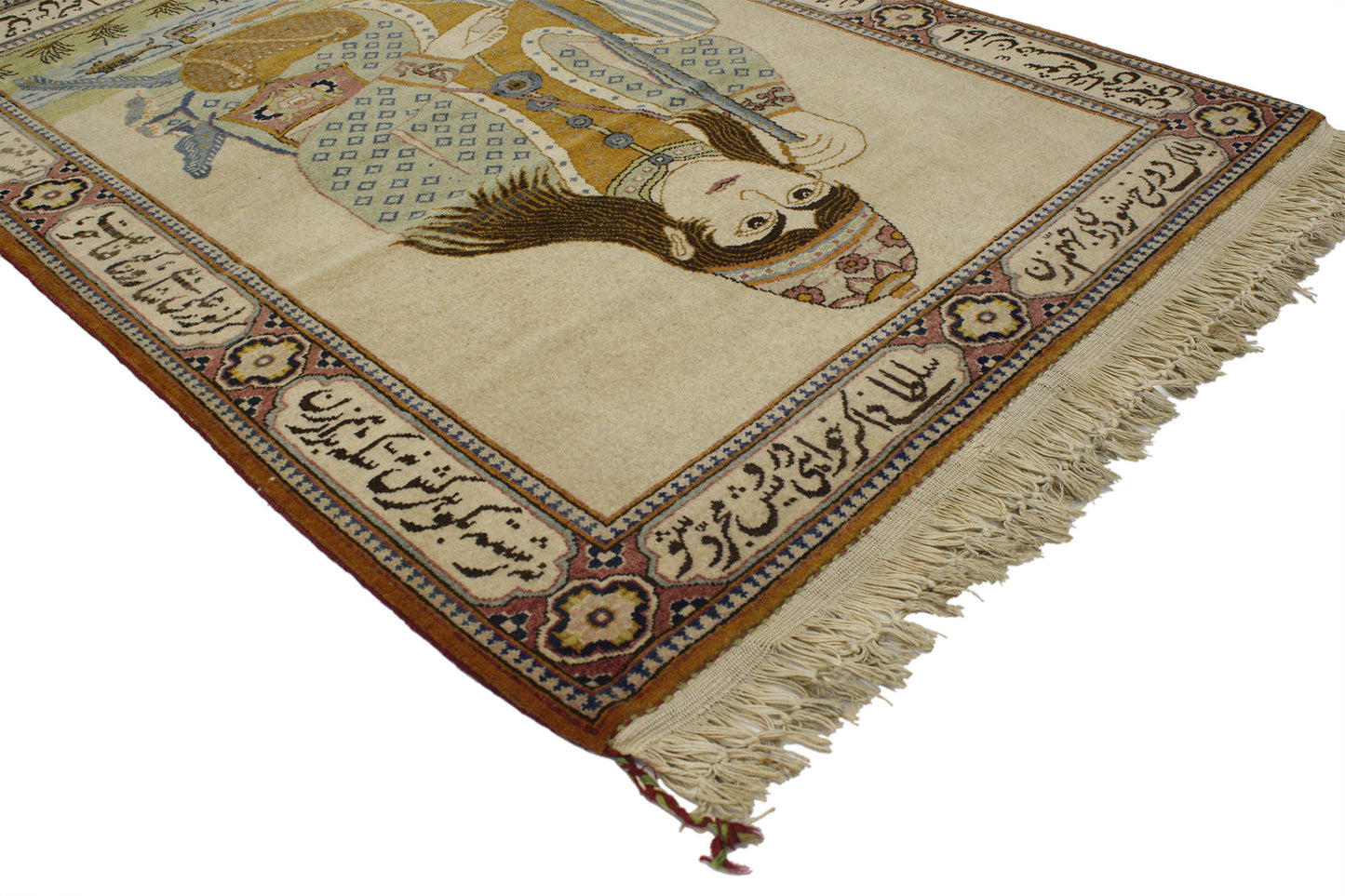
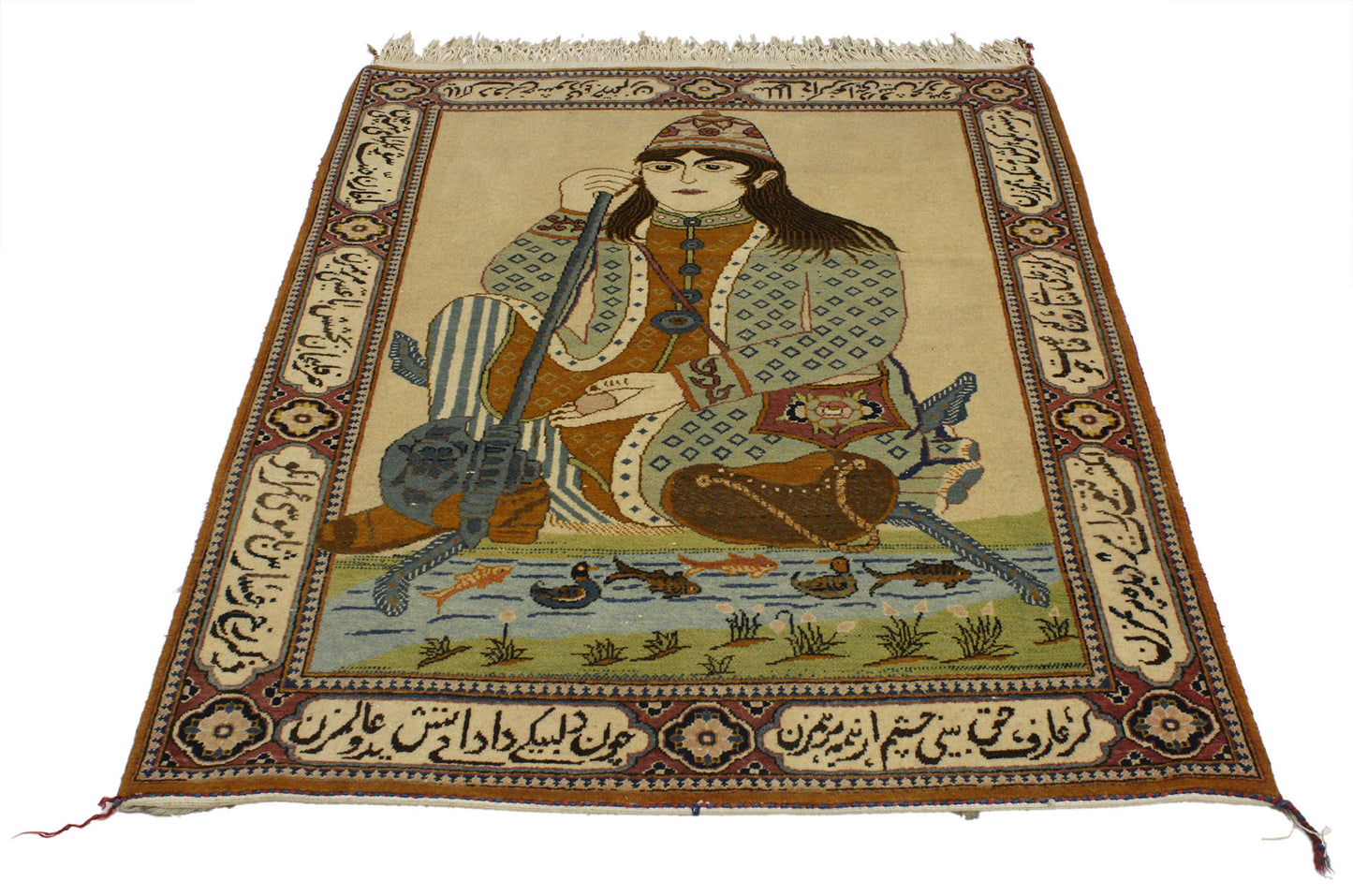
Inquiry
Please send us a message for pricing and questions regarding this product!
Description:-
77017 Antique Persian
Kashan Rug Dervish Pictorial Poetry of Abbas Foroughi Bastami 02'11 x 03'11
From Esmaili Rugs Collection. This exceptional antique Persian Kashan rug
is a beautiful example of an expressive dervish pictorial style. In the center,
a charismatic dervish man tranquilly sits with his Kashkul (Kashkool) also
known as a ‘Begging Bowl’ among a lake with ducks and fish. This meticulously
detailed composition is surrounded by a cartouche style border adding a deeper
perspective to this extraordinarily idyllic scene. Poetry of Abbas Foroughi
Bastami, Iranian poet. In the center, the dervish man peacefully sits while the
ducks and fish help create an enchanting and heavenly story. The tiniest
aspects are carefully outlined in contrasting colors while the subtler
variations of color produce a captivating visual effect. This extraordinary
darvish pictorial rug is a magnificent example of the Persian creative
dedication and culture needed to produce such methodically composed work of
art. Dervish (Darvish) is a Persian name referencing the people living and
practicing the path of their God, Allah.
According to Wikipedia, a dervish is
someone treading a Sufi Muslim ascetic path. They are also known as 'Tariqah'
and recognized for their austerity and their vow to extreme poverty. The
dervish believes in relinquishing one's earthly ties to reach a state of
tranquility, love and harmony. In the majority of Sufi orders, a dervish is
known to practice dhikr through physical exertions or religious practices to
attain the ecstatic trance to reach Allah. Their most common practice is Sema
which is associated with Rumi.
- Abrash.
- Hand-knotted wool.
- Made in Iran.
- Measures: 02'11 x 03'11.
Faq
Collapsible content

Do you offer rug-related services?
Yes, Esmaili Rugs offers several services to maintain and enhance your rugs.
Do you have a trade program for professionals?
Yes, Esmaili Rugs has a Trade Program designed for interior designers, architects, and other trade professionals. This program offers exclusive benefits and services tailored to professional needs.
How can I contact Esmaili Rugs for inquiries or support?
You can reach out through the "Contact Us" page on their website. Additionally, Esmaili Rugs is active on social media platforms like Facebook and Instagram, where you can connect and stay updated on their offerings.
Can I schedule an appointment for personalized assistance?
Absolutely. Esmaili Rugs offers concierge appointments with their internationally respected rug expert team. This service is ideal for collectors, interior designers, and anyone seeking personalized guidance.
What types of rugs does Esmaili Rugs offer?
Esmaili Rugs provides a diverse selection of rugs, including Moroccan, Turkish, Persian, Oushak, Chinese, and Tapestries. These are available in various sizes such as small, medium, large, extra-large, runners, round, square, and custom dimensions.

